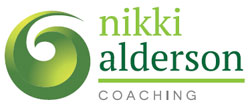Women’s Wellness at Work Blog Series: This 2-part blog series highlights how women’s workplace wellbeing is under threat and considers how to improve it, for more positive mental health and productivity outcomes. Whilst aimed at female professionals, many of the wellness strategies advanced are applicable across the board.
All names have been changed in the working examples provided to protect client confidentiality
The stats behind the challenge
Depression and anxiety cost the global economy an estimated US$ 1 trillion per year in lost productivity, according to World Health Organisation figures published May 2019. Whilst such labels aren’t common parlance in the legal profession, in 2028 The Guardian newspaper reported that barristers in England and Wales were “in the grip of a mental health crisis”.
A survey for The Bar Council revealed that nearly half of participating counsel said they worked over sixty hours a week and only 50% said they felt able to balance their home and work lives. Statistics for The Bar Council’s “Wellbeing at the Bar” initiative suggest that one in three barristers find it difficult to control or stop worrying, and two out of three feel that showing signs of stress equals weakness. And that’s not to mention the added burden of being the primary care giver, as women still often are. The consequent negative impact on wellbeing is obvious.
Overcoming the common threats to wellness at work
Taking effective actions to promote wellness at work clearly benefits productivity, given that for every US$ 1 put into scaled up treatment for common mental disorders, the WHO statistics assert there is a US$4 return in improved health and productivity.
So what effective actions can YOU take, whether as an organisation or female professional, to improve your wellness and productivity at work?
6 strategies to improve women’s wellness at work
1. Wellness Routine
Adopt a non-negotiable wellness routine, whatever works for you, whether that be meditation, exercise, yoga, keeping active, the list is endless. Whilst some things may slip due to unexpected deadlines and workload, the sooner regular patterns are established, the quicker they become second nature. Create habits not decisions. The benefits become obvious, and are powerful motivators. Regular breaks and keeping “proper” hours promote this too.
2. Hydrate
Keep well hydrated. Even when it is so easy to skip lunch with deadlines and meetings and countless other things on the “to do” list of a busy female professional getting in the way, keeping water levels topped up throughout the day is vital to improve, amongst other things, muscle function, digestion and even our state of mind.
That’s to say nothing about avoiding liquid lunches. Thankfully, gone are the days of my mini-pupillages (work experience) thirty years ago, when afternoons turned into evenings whilst the local Bar socialised at the pub, just up from the law courts, some of whom would think nothing of returning to court for the 2 o’clock “session” tanked up on red wine and ready for an afternoon nap. Observationally, mostly men as opposed to women in law, as I recall. That said, alcoholism within the profession is not uncommon even now, and the regular focus of bar dinners and social events remains heavy on overconsumption of alcohol. The knock-on effects to women’s wellness are well rehearsed, including the blurring of acceptable boundaries between work and professional behaviour, (sexual harassment still being rife at the Bar, and notably at events such as these) low mood and an inability to cope.
3. Mindfulness and getting back to basics
Strip things back to the bare essentials to avoid overwhelm and promote wellness at work. Firstly, identify and stick to clear boundaries, particularly important in preserving a healthy work life balance. For working mother’s in particular this can be imperative. Then learn to say no and, through practice, work out effective methods of doing so without cutting off future opportunities.
Consider how employee or colleague mindfulness could be supported and encouraged. What is your culture, and how can it improve and promote a more mindful approach? Are people showing up mindful or with minds full?
4. Change your “state” and environment
Smile. Over and above the thoughts you have, how about improving mood by behaviour? It may seem like the simplest of things, but how often when you are busy, stressed or overwhelmed do you take a moment to consciously smile? Try it. The endorphins released around the body when you do have such an instantaneous effect, you can’t fail to feel, even temporarily, a changed and more positive mood.
Breathe: deeply, with your eyes shut, from your core, and with a long exhale to finish. Just allowing yourself that single moment to pump air through your body and take a reflective pause can be all it takes to feel re-centred and back on point.
Change your state. How many of us have experienced that afternoon eye flicker? I vividly remember the 3 o’clock graveyard slot in crown court trials where interviews were simply being read into the record for the jury, which I already knew like the back of my hand. Paper pushing at my desk when I know I SHOULD be working and when motivation to do so is low.
When you have an opportunity for “a natural break,” change state. For women in law, get away from your immediate environment, move away from your desk, even go to the toilet and do some star jumps if you are able! Honestly, try it. Equally, playing your favourite song (with ear buds if you are in open plan offices) can do wonders to boost and improve mood. This change in state works wonders for your energy levels, and can significantly alter how alert you feel.
For the law firm, barristers’ chambers or other legal organisation, lead by example. Encourage genuine chances for colleagues to leave their desks, better still, the office, when and if they want, for a proper lunch break, for example.
5. Focus on nature.
Even if it’s a picture of a country road on the office wall, or a thriving plant in the corner of your room, allow yourself a moment to shift your focus, then return with more energy and vigour. Better still, look, or even get, out of the office. Incorporating voluntary opportunities to exercise and access the outdoors in a working day are frequently credited for an increase in performance, productivity and wellbeing.
“If you always keep your nose to the grindstone, you’ll never see the sky”.
Promote women’s wellness at work and social events such as yoga and team sporting get-togethers as being an integral and important part of the organisational ethos. Better to shift the social focus here than suggesting the traditional “pint after work”, particularly when working mums often have places to be between the bath/ bedtime hours of 5&7pm.
6. Practise daily gratitude and journaling
First thing in the morning, think of, and even journal, three things you are grateful for, as opposed to the mobile phone social media “death scroll.” This will give you a proactive sense of your own purpose and owning your own day before you allow in reactive distractions of the digital world: your family, a sunrise, the peace of an early morning, for example.
On the days you come across a difficult judge, managing partner or client, firstly, remember to remain calm under pressure. Then, even in the moments of extreme pressure and stress at work, on the commute home, be grateful for a beautiful sunset, your favourite song playing on the radio, your friends and family. Be amazed at how quickly focusing on the positives can put into perspective, and most importantly reduce the extent of, the negatives.
As an organisation, incorporate gratitude into the culture: recognition and rewards for colleagues and team mates could assist here, along with a transparent appraisal system. I spoke to a female associate solicitor in a law firm recently voted “lawyer of the month.” Not only was she incentivised by the nomination but equally grateful: a winning combination for increased productivity.
Which of these 6 strategies resonate with you? Which will you implement, and when?
Watch out for further wellness at work strategies in the second wellbeing blog, due for publication February 2025.

